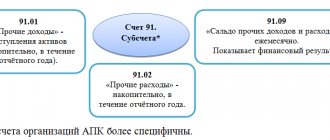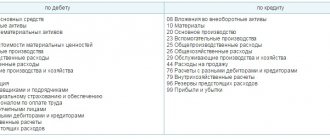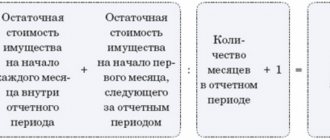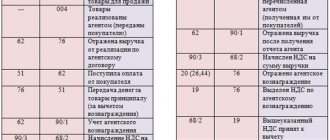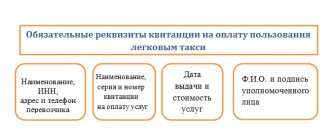Accounting accounts
All accounting accounts used by Russian organizations are presented in a standard Chart of Accounts. This document is approved by the Resolution of the Ministry of Finance of the Russian Federation. Its use is mandatory for all entities carrying out economic activities in the country (with the exception of credit and state budget organizations).
To ensure unity of principles for its use, the Ministry of Finance attaches instructions to the Chart of Accounts. Accounting accounts are divided into several main groups (sections of the chart of accounts). Each of the groups is used to summarize information about a certain category of business transactions carried out by the company as part of a business process. For example, there is a group of accounts that is designed to record information about inventories (raw materials, supplies, spare parts, etc.) or production costs.
General running costs
In every company, many processes occur in parallel with production, and they influence it indirectly. These could be the direct implementation of accounting, the purchase of a chair for the director, the renovation of the building in which the board of directors of the enterprise meets, etc. The costs of providing these processes and similar ones are called general business expenses.
Accounting account 26 is an account that accumulates information about costs for management needs not directly related to production. The recommendations for using the chart of accounts contain an open list of such expenses.
Classification of accounting accounts
Accounting accounts are divided into three main groups: active, passive and active-passive.
In order to understand whether an accounting account is active or passive, it is necessary to define these concepts. Active accounts are intended to account for the company's property (assets), passive accounts are used to collect information about the sources of income (financing) of assets.
Active-passive are accounts for recording the obligations (debts) of the company and the results of its activities. Any accounting account can be schematically depicted in the form of a table. Accounting scheme
| 26 “General business expenses” | |||||
| Debit | Credit | ||||
| Balance at the beginning | 0,00 | Balance at the beginning | — | ||
| date | Transaction amount | date | Transaction amount | ||
| Total by debit (debit turnover) | 0,00 | Total loan (loan turnover) | 0,00 | ||
| Closing balance | 0,00 | Closing balance | — | ||
The table “Account Chart” shows the active account. He cannot have a credit balance (negative result). A liability account cannot have a debit balance. An active-passive account can have both a debit and a credit balance.
General business expenses, at first glance, cannot be attributed to property or to the sources of its formation. The fact is that expenses collected on account 26 after the end of the reporting period (calendar month) are included in the cost of finished products, which is a company asset. Thus, accounting account 26 is an active account.
Account 58 “Financial investments”
Account 58 “Financial investments”
Related publications
Account 58 “Financial investments” is intended for detailed accounting of the enterprise’s investments. What is a financial investment? In what order is accounting kept? 58? Let's look at typical examples and wiring.
Accounting account 58 is...
Regulatory requirements for the formation of data on financial investments in accounting are regulated by PBU 19/02. In accordance with clause 3 of this document, the following are recognized as investments of a legal entity:
- Securities (CB) of state and municipal structures.
- Other securities, including overdue ones (debt bonds, bills).
- Loans provided.
- Contributions to the authorized capital of enterprises, incl. subsidiaries or dependent companies, under simple partnership agreements.
- Receivables transferred by assignment.
- Deposits.
- Other types.
Note! Investments in own securities are not considered financial investments; bills for payments for goods sold; precious metals, art objects, jewelry; etc.
Thus, accounting account 58 is a collection of information on the movement of short-term (for a period of less than 1 year) and long-term (more than 1 year) investments of the enterprise in sub-accounts opened, depending on the need.
According to Order No. 94n dated October 31, 2000, account 58 “Financial investments” may have the following subaccounts:
- Account 58. 1 – to reflect information on shares and shares.
- Account 58.2 – to reflect information about debt securities.
- Account 58.3 – to reflect information about loans provided to other companies.
- Account 58.4 – to reflect information about deposits under simple partnership agreements.
Count 58 – active or passive?
The placement of the organization's investments is carried out in the debit of account 58 in correspondence with cash or other accounts - 50, 52, 51, 80, 76, 75, 98, 91. The credit of account 58 reflects the repayment of loans, the excess of the purchase price of securities over the nominal, redemption and sale Central Bank, return of assets on deposits of a simple partnership and other operations. Correspondence is carried out with accounts - 52, 51, 76, 90, 80, 91, 99. The balance of active account 58 shows the balance of financial investments as of a given date.
Important! 58 account in the balance sheet is displayed together with the account. 73 and 55 (in terms of loans to staff and deposits) on lines 1170, 1240, depending on the validity period minus the account balance. 59, where reserves for impairment of investments are formed.
Account 58 “Financial investments” - examples of postings
To make the correspondence of account 58 more understandable, let’s look at practical examples:
Example 1
“On the transfer of fixed assets/funds as a contribution to the charter under a simple partnership agreement.” Let’s say the company paid for its share of the equipment. The market value is estimated at 400,000 rubles, wiring - D 58.4 K 76 for 400,000 rubles. under contract.
Accordingly, the object is written off from the balance sheet. When paying for a deposit in cash, the posting is D 58.4 K 50, 51, 52.
Example 2
“On investments in debt securities.” Suppose an organization purchased shares for 100,000 rubles. The accountant will make the following entries:
D 58.1 K 51 for 100,000 rubles. – the purchase of shares is reflected.
D 58.1 K 91.1 for 700 rubles. – reflects the increase in share price. When decreasing, reverse wiring is performed D 91.2 K 58.1.
D 76 (62) K 91.1 for 120,000 rubles. – the sale of shares to a legal entity is reflected.
D 91.2 K 58.1 for 100,700 rubles. – the write-off of the current book value of sold shares is reflected.
Example 3
“For providing a loan to a legal entity or employee.”
The organization issued a loan to another enterprise for 500,000 rubles, posting - D account 58.03 K 51. In this case, interest is calculated monthly according to D 76 K 91.1,
and repayment of the principal debt and interest obligations is carried out by transferring funds to the borrower's account D 51 K 58.03. If a loan is issued to an employee of an organization, it is more appropriate to record all payments through an account. 73.
Conclusion - we figured out how account 58 is reflected in the balance sheet; We found out what standard transactions are used to document the movement of various financial investments of an enterprise and what legislative documents regulate investment accounting.
Accounting entries for the debit of account 26
Any business transaction in accounting is reflected in the debit of one account and the credit of another account.
Accountants usually call a posting a record of any fact in the company’s activities. For each account there is a list of typical (most common) transactions. For clarity, information about the main transactions using account 26 is presented in the table below. Account 26 in accounting. Postings
| Debit | Credit | Contents of operation |
| 26 | 02 | Depreciation of fixed assets not used in production has been calculated |
| 05 | Depreciation of intangible assets accrued | |
| 10 | Use of materials for general household needs | |
| 21 | Used semi-finished products produced by our own production for general economic needs | |
| 23 | The costs of auxiliary production are included in general operating expenses | |
| 29 | Included in general operating expenses are the costs of servicing production facilities. | |
| 43 | Use of finished products for general business needs | |
| 60 | Reflects the debt to the supplier of services provided for general business needs | |
| 68 | Accrued taxes and fees included in production costs | |
| 69 | Contributions to the Social Insurance Fund and the Pension Fund of the Russian Federation were accrued for the salaries of employees performing general business work | |
| 70 | Salaries accrued to employees performing general business work | |
| 71 | The amounts of general business expenses incurred by accountable persons are reflected | |
| 76 | Reflects the debt of various creditors for services provided for general business needs | |
| 94 | The amount of shortfalls was written off for general business expenses, in the pre-austic aisles of natural loss | |
| 96 | A reserve has been created for general business expenses | |
| 97 | Deferred expenses are included in general business expenses |
Typical transactions and accounting features
Account 26 is an active accounting account. That is, debit turnover increases OCR indicators, and credit turnover reflects the write-off of costs for main production. Closing the 26th account is mandatory at the end of the reporting period - month. That is, there should be no balances on this account at the end of the period.
Basic accounting entries:
| Operations | Debit | Credit |
| Depreciation was accrued for fixed assets and intangible assets used by administrative personnel | 26 | 02 - fixed assets 05 - intangible assets |
| Salaries and insurance contributions for the company's management personnel have been calculated | 26 | 70 - salary 69 – contributions |
| Materials used in the work of administrative and management personnel (AUP) have been written off | 26 | 10 |
| Part of the finished product is sent for chemical protection | 26 | 43 |
| Services of third-party organizations are accepted as part of the OCR | 26 | 60 76 |
Accounting entries for loan 26 accounts
Account 26 in accounting. Postings
| 08 | 26 | General business expenses are taken into account as capital construction costs |
| 20 | General business expenses are written off as production expenses | |
| 23 | General business expenses are written off as general production expenses | |
| 28 | General business expenses are included in the cost of correcting defects | |
| 29 | General business expenses are included in overhead costs | |
| 76 | Loss due to insured events written off | |
| 86 | Targeted financing funds written off | |
| 90 | The amount of management costs written off | |
| 97 | General business expenses are included in the costs of developing new products | |
| 99 | General business expenses are included in emergency expenses |
How to close 20, 23, 25, 26 accounts in 1s: accounting 8.3
Let us recall that general production costs are the costs of servicing the main and auxiliary production facilities of the organization.
General production expenses are accounted for on account 25 “General production expenses” (Order of the Ministry of Finance dated October 31, 2000 No. 94n).
General production costs are collected in the debit of account 25 from the credit of accounts for accounting for inventories, settlements with employees for wages, etc. In fact, accounting for general production and general business expenses in terms of reflection in the debit of accounts 25 and 26 “General business expenses” is similar. The difference is only in the composition of costs, which can be included in the composition of general production or general economic costs of the organization.
The most typical example of overhead costs is the costs of a workshop in which several types of products are produced.
| Operation | Account debit | Account credit |
| Accrued depreciation of general production equipment | 25 | 02 “Depreciation of fixed assets” |
| Materials written off for general production purposes | 25 | 10 "Materials" |
| Wages accrued to general production employees | 25 | 70 “Settlements with personnel for wages” |
| Insurance premiums have been calculated for the wages of general production employees. | 25 | 69 “Calculations for social insurance and security” |
| Reflected expenses for insurance of general production property | 25 | 76 “Settlements with various debtors and creditors” |
| Provided third-party general production services | 25 | 60 “Settlements with suppliers and contractors” |
Debit account 20 “Main production” - Credit account 25
Similarly, general production costs can be written off as part of the costs of auxiliary production or service industries and farms.
Debit account 23 “Auxiliary production” - Credit account 25
Debit of account 29 “Service production and facilities” - Credit of account 25
The organization determines the methods for distributing general production and general business expenses independently based on the characteristics of its activities and the procedure established in the Accounting Policy.
KOPR = OPR / B,
where KOPR is the coefficient of distribution of overhead costs;
OPR - the amount of general production expenses for the month;
B – base for distribution of general production expenses.
The specified coefficient can show how many rubles of overhead costs are per 1 ruble of the distribution base. This coefficient can also be presented as a % by multiplying the resulting indicator by 100.
We gave an example of the distribution of indirect costs reflected in account 25, in proportion to the direct wages of the main production workers.
However, the basis for the distribution of general production costs may be different. For example, the cost of basic raw materials and supplies, the number of employees, the cost of fixed assets and other indicators.
When determining a particular method for distributing overhead costs, the basis is chosen that most closely shows the relationship between overhead costs and the cost of the final product.
General business expenses include all costs for administrative needs that are not directly related to production, provision of services or performance of work, but relate to the main type of activity.
The list of general business expenses depends on the profile of the organization and is not closed, according to the recommendations for using the chart of accounts.
The main general operating costs can be identified:
- Administrative and management expenses
- Business trips;
- Salaries of administration, accounting, management personnel, marketing, etc.;
- Entertainment expenses;
- Security, communication services;
- Consultations of third-party specialists (IT, auditors, etc.);
- Postal services and office.
- Repair and depreciation of non-production fixed assets;
- Rent of non-industrial premises;
- Budget payments (taxes, fines, penalties);
- Other:
Organizations not related to production (dealers, agents, etc.) collect all costs on account 26 and subsequently write them off to the sales account (account 90).
Let's consider the main properties of account 26 “General business expenses”:
- Refers to active accounts, therefore, it cannot have a negative result (credit balance);
- It is a transaction account and does not appear on the balance sheet. At the end of each reporting period it must be closed (there should be no balance at the end of the month);
- Analytical accounting is carried out according to cost items (budget items), place of origin (divisions) and other characteristics.
| Dt | CT | Wiring Description |
| 26 | 02 | Depreciation calculation for non-production fixed assets |
| 26 | 05 | Depreciation calculation for non-production intangible assets |
| 26 | 10 | Write-off of materials, inventory, workwear for general business needs |
| 26 | 16 | Variance in the cost of written-off general business materials |
| 26 | 21 | Write-off of semi-finished products for general business purposes |
| 26 | 20 | Attribution of costs (work, services) of the main production to general economic needs |
| 26 | 23 | Attribution of costs (work, services) of auxiliary production to general economic needs |
| 26 | 29 | Attribution of costs (work, services) of service production to general economic needs |
| 26 | 43 | Write-off of finished products for general business purposes (experiments, research, analyses) |
| 26 | 50 | Decommissioning of postage stamps |
| 26 | 55 | Payment of expenses (minor work, services) from special bank accounts |
| 26 | 60 | Payment for work and services of third parties for general business needs |
| 26 | 68 | Calculation of payments of taxes, fees, penalties |
| 26 | 69 | Deduction for social needs |
| 26 | 70 | Calculation of wages for administrative, managerial and general business personnel |
| 26 | 71 | Accrual of travel expenses, as well as accountable expenses for small general business needs |
| 26 | 76 | General expenses related to other creditors |
| 26 | 79 | General business expenses associated with the organization's divisions on a separate balance sheet |
| 26 | 94 | Write-off of shortages without perpetrators, except for natural disasters |
| 26 | 96 | Assigning general business expenses to the reserve for future expenses and payments |
| 26 | 97 | Write-off of a share of future expenses for general business expenses |
| Dt | CT | Wiring Description |
| 08 | 26 | Attribution of general business expenses to capital construction |
| 10 | 26 | Capitalization of returnable waste and unused materials written off as general business expenses |
| Write-off of general business expenses when closing the month, that is, where account 26 is written off | ||
| 20 | 26 | For main production |
| 21 | 26 | For the production of semi-finished products |
| 29 | 26 | For service production |
| 90.02 | 26 | Performed work and services for third parties |
| 90.08 | 26 | On the cost of sales when using the direct costing method |
Closing account 26, that is, writing off all general business expenses, is performed in several ways:
- Included in the cost of production through production accounts if products are produced;
- Referred to as cost of sales when providing services or work;
- Referred to the current expenses of the reporting month using the direct costing method:
In this case, general business expenses are written off in shares, taking into account the distribution base, into production accounts and may remain on product cost accounts (for example, when producing products under account 43 “Finished Products”) or production accounts (for example, work in progress under account 20 “Main Production” ) at the end of the reporting period.
Get 267 video lessons on 1C for free:
- Revenue
- Product output volume
- Planned cost of production
- Material costs
- Direct costs
- Salary and so on
| Dt | CT | Wiring Description |
| 20 | 26 | General business expenses for main production were written off |
| 23 | 26 | General business expenses for auxiliary production were written off |
Therefore, general business expenses are written off:
- In full - if one product is produced (no analytics);
- Distributed across all types of products in proportion to the selected base - if several types of products are produced and calculated in the context of analytics.
Example
The accounting policy states:
- General business expenses are written off against the cost of production.
- The distribution base is material costs.
In November 2021, direct expenses amounted to RUB 51,040.00:
- For headwear – RUB 28,020.00. of them:
- Material costs – RUB 15,000.00.
- For the production of shoes - RUB 23,020.00. of them:
- Material costs – RUB 10,000.00.
indirect costs – 18,020 rubles.
- 3/p administrative staff – RUB 10,000.00.
- Insurance premiums – RUB 3,020.00.
- Premises rental – RUB 5,000.00.
| 30.11.2016 | 20 | 26 | 10 812 | Closing account 26 (headwear) |
| 30.11.2016 | 20 | 26 | 7 208 | Closing account 26 (shoes) |
| Dt | CT | Wiring Description |
| 90.02 | 26 | General business expenses are written off as the cost of services and work |
- Expenses for repairs of fixed assets not related to production.
- Expenses for renting premises used for management staff and other non-production purposes.
- Expenses for information and consulting services.
- Expenses for materials used for administrative needs.
- Entertainment expenses.
- Expenses for retraining of personnel.
- Expenses for paying for the services of security organizations.
- Recruitment costs.
- Expenses for subscription to periodicals.
- Software costs.
- Expenses for telephone calls and Internet services.
- Travel expenses.
- You can familiarize yourself with all the nuances of documenting travel expenses in the article “Procedure for accounting for travel expenses in 2017-2018.”
Important
In this regard, I created separate types of calculations for employees involved in the production of tables and in the production of chairs. And already in the settings of these types of calculations, in the “Reflection method” field, we indicate the appropriate method.
Analytical accounting of general business expenses
One of the most important tasks of accounting is collecting information about business activities and providing it to company departments that are engaged in analyzing such data and developing coordination decisions aimed at improving and increasing the effectiveness of the business process. The goal of solving this problem is to organize the accounting methodology in such a way that the data used is the most correct and complete.
To make data more informative, there is such a direction as analytical accounting. The system of such accounting allows you to group information according to characteristics that are most suitable for a specific vector of commercial activity.
Accounting account 26 is an account that involves grouping data by cost items. They can be material or transportation costs, labor costs, etc. Each company determines the criteria for classifying costs in account 26 for itself.
General and production expenses
Accounting professionals can easily draw a line between the concepts of general production and general business expenses, but to the average person they may seem similar or even equivalent. To collect information about such expenses, accounts 25 and 26 are used in accounting.
General business expenses are expenses that are common to each division of the company. And general production expenses will be expenses that belong only to the production unit of the enterprise. For example, the wages of the legal department of a company are general business expenses, and the wages of the mechanical shop employees who maintain production equipment, main and auxiliary production, must be classified as general production expenses.
Practice using 26 accounts
So, you have read a very short excursion into “26 Accounting for Dummies.” The information presented is only a small part of the knowledge that is necessary for the error-free application of 26 counts in practice. In order to consolidate the knowledge, I will give several practical examples.
Accounting account 26 is, for example, the following correspondence:
- D26/K60. Services were provided by a third party to renovate the premises of the commercial department.
- D26/K10. The use of office supplies by office employees is reflected.
- D26/K69. Contributions to the Pension Fund and the Social Insurance Fund were accrued for the salaries of employees of the purchasing department, etc.
How to close account 26
The method of closing account 26 depends on the method of generating product costs. The company must regulate such a choice in its accounting policies. Currently two methods are used:
- at actual cost;
- at reduced cost or direct costing method.
When writing off chemical and chemical works at actual cost, costs should be written off to accounting account 20 “Main production”. Note that if the company’s accounting includes auxiliary or servicing production workshops, then costs should also be distributed between 23 and 29 accounting accounts, respectively. However, OMR can be written off to these accounting accounts only if the company has performed such services or work in favor of third-party organizations. The procedure for allocating costs and the method of their distribution between write-off accounts should be fixed in the accounting policy.
Accounting entry:
Dt 20 (23, 29) Kt 26.
To what account is account 26 closed using the direct costing method? If an organization operates at a reduced cost, then expenses for general business needs should be written off immediately to the account. 90-2 “Cost of sales”.
Accounting entry:
Dt 90-2 Kt 26.
